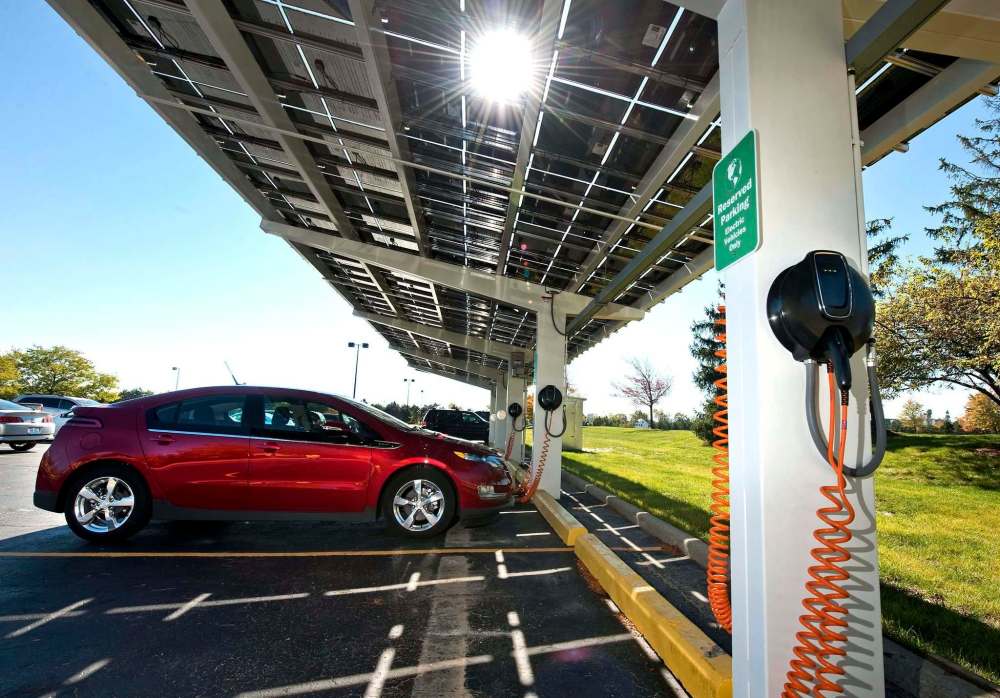Where will we get electricity for EVs?
Advertisement
Read this article for free:
or
Already have an account? Log in here »
To continue reading, please subscribe:
Monthly Digital Subscription
$0 for the first 4 weeks*
- Enjoy unlimited reading on winnipegfreepress.com
- Read the E-Edition, our digital replica newspaper
- Access News Break, our award-winning app
- Play interactive puzzles
*No charge for 4 weeks then price increases to the regular rate of $19.00 plus GST every four weeks. Offer available to new and qualified returning subscribers only. Cancel any time.
Monthly Digital Subscription
$4.75/week*
- Enjoy unlimited reading on winnipegfreepress.com
- Read the E-Edition, our digital replica newspaper
- Access News Break, our award-winning app
- Play interactive puzzles
*Billed as $19 plus GST every four weeks. Cancel any time.
To continue reading, please subscribe:
Add Free Press access to your Brandon Sun subscription for only an additional
$1 for the first 4 weeks*
*Your next subscription payment will increase by $1.00 and you will be charged $16.99 plus GST for four weeks. After four weeks, your payment will increase to $23.99 plus GST every four weeks.
Read unlimited articles for free today:
or
Already have an account? Log in here »
Hey there, time traveller!
This article was published 23/06/2021 (1618 days ago), so information in it may no longer be current.
It might not be quite as noticeable in Canada, but the electric-vehicle era has arrived.
The complete transition to EVs is already well underway in Norway, where 54 per cent of all cars sold in 2020 were either battery electric or plug-in hybrids. In the first four months of 2021, that number rose to an astonishing 80 per cent. So, eight out of 10 cars registered in 2021 are powered through the Norwegian electricity grid, which is almost entirely based on renewable hydroelectricity.
During the forgettable pandemic year of 2020, worldwide sales of battery electric and plug-in vehicles increased by 43 per cent, while sales of gasoline and diesel vehicles dropped by 20 per cent. EVs now account for about 4.3 per cent of all car sales globally.

These developments were largely an outcome of improvements in battery technology and associated reduction in costs. Over the last 10 years, average costs for EV batteries have dropped by about 90 per cent, and are projected to drop by another 40 per cent by 2030, making EVs cheaper to produce than gasoline cars at that point.
Not a day seems to go by without another announcement by a large vehicle-maker on their new EV targets and investments. Statements from high-volume producers such as GM and VW have been particularly noteworthy. VW has committed to introducing 27 new electric models to the market over the next few years, and GM announced that it will stop selling internal-combustion engine vehicles by 2035. GM also pledged investments of US$27 billion over five years to transition manufacturing plants and build new EV capacity.
Going forward, one of the important things to consider is how the additional electricity needed for future large-scale EV adoption is generated. If the energy source is carbon intensive (such as coal, fuel oil or, to a lesser extent, natural gas), the environmental benefits of transitioning to EVs will be significantly diminished. Although there are wide regional disparities in how electricity is generated in Canada, it is possible to compare strategies on the basis of life-cycle costing (LCO).
The lowest-cost option is investing in energy conservation and efficiency programming. LCOs of energy efficiency programs are in the range of $20/megawatt hours (MWh), which is about five times less than what residential consumers pay in Manitoba. So, investing in programs that reduce electricity consumption will provide the cheapest way to create capacity for EVs. Encouraging EV charging at off-peak hours, between 12 p.m. and 6 a.m. through smart metering and incentives, would allow better management of the grid and provide a much-needed night-time market for electric utilities.
The next lowest-cost options are in renewable energy. Levelized Cost of Electricity (LCOE) studies, which compare the overall cost of electricity production including capital, operating, fuel costs, permitting, grid integration and financing, can be used to compare a variety of new electricity generation options. On-shore wind and utility-scale solar generally come out ahead of natural gas-fired plants, coal plants or nuclear power plants when considering new capacity. LCOE of on-shore wind in 2020 was in the range of $30/MWh and utility-scale solar at around $35/MWh. These numbers now exclude any subsidies previously provided by governments.
Improvements in technology, scale-up of production and sector competition have led to a steep drop of utility-scale solar costs by 89 per cent and on-shore wind energy costs by 71 per cent over the last decade. Although the rates of these declines have slowed recently, there is room for further improvements.
The widescale use of such intermittent energy sources is limited by the ability to reliably integrate them into the existing grid. Although the upper limit for this integration has not been reached in many Canadian jurisdictions, reliability is an important consideration in decision-making. Therefore, baseline power that can support intermittent renewables, such as large-scale hydroelectricity, nuclear or natural gas, will still be important.
Considering the implications of rising carbon pricing and intensifying pressures to meet more aggressive greenhouse-gas targets, the preference for baseline power generation will increasingly go to carbon-free options (hydro, geothermal, biomass, biogas, nuclear). This is where provinces such as Manitoba, Quebec, British Columbia, Ontario, Newfoundland and Labrador and Prince Edward Island have a distinct advantage.
Upgrading grid infrastructure to better integrate intermittent energy sources and exploring new grid-scale storage options (such as lithium-ion battery farms, liquid flow batteries, compressed/liquefied air batteries) will ensure future large-scale EV adoption is sustainable and manageable.
Canada — and, in particular, Manitoba — is well positioned to join the EV transition.
Nazim Cicek is a professor in the department of biosystems engineering at the University of Manitoba.


